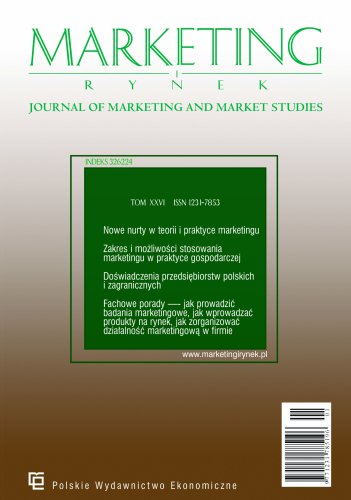Luxury hotels — the essence, role and development paradigms on the tourist market
The role of luxury hotels is growing rapidly on the contemporary hotel market. This is the result of an increase in the number of affluent consumers, the dynamic development of business tourism, and a sharp increase in the importance of air transport in tourism. In many countries there is a sector with high market potential. The rapid development of this sector means that luxury hotel management companies apply a segmentation strategy. In Poland, the number of wealthy people is increasing, which is estimated at over 1.2 million. Consequently, favorable conditions are created for the development of the luxury hotel sector. This sector is not satisfactorily developed in our country. Meanwhile, luxury hotels are leaders in introducing innovations and even in times of economic stagnation, their services are considered more resistant to economic fluctuations. The article presents the essence and features of luxury hotels, their role and development paradigms on the global hotel market. The study presents the current state of development of luxury hotels in Poland, their spatial distribution and outlines perspectives for further development.
References
Bibliografia/References
Ahn, Y. H. i Pearce, A. R. (2013). Green Luxury: A case study of two green hotels. Journal of Green Building, 8(1). https://doi.org/10.3992/jgb.8.1.90
Barrows, C. W. i Powers, T. (2009). Management in the Hospitality Industry. Hoboken: John Wiley & Sons.
Błądek, Z. (red). (2013). Nowoczesne hotelarstwo. Od projektowania do wyposażenia. Warszawa: Oficyna Wydawnicza „Adam”.
Bochańczyk-Kupka, D. (2014). Luksus i dobra luksusowe. Studia Ekonomiczne, (176). Uniwersytet Ekonomiczny w Katowicach.
Chu, Y. (2014). A review of studies on luxury hotels over the past two decades. Iowa: Iowa State University.
D’Arpizio, C., Levato, F., Kamel, M. -A. i de Montgolfier, J. (2017). Luxury goods worldwide. Market study, Fall-Winter 2017. Bain & Company.
Digital Luxoury Group. (2018). The Word Luxury Index. Hotels. Lusanne: Digital Luxoury Group.
Dryl, W. (2012). Strategie marketingowe dóbr luksusowych. Zarządzanie i Finanse, (10).
Górna, J. (2009). Czynniki rozwoju rynku usług uzdrowiskowych w Polsce. W: M. Boruszczak (red.), Turystyka uzdrowiskowa. Stan i perspektywy. Gdańsk: Wyższa Szkoła Turystyki i Hotelarstwa.
Heine, K. (2012). Concept of Luxury Brands. Berlin: Technische Universität Berlin.
Henschel, K. (2008). Hotelmanagement. Mûnchen-Wien: Oldenburg Vrlag.
Hotelarz (2017). Raport z rynku HORECA. Katalog dostawców. Hotelarz.
Hotelarz (2018). Raport z rynku HORECA. Katalog dostawców. Hotelarz.
Kasztalska, A. (2017). The Economic Theory of Luxury Goods. International Management of Innovations, (2).
Kopaliński, W. (1994). Słownik wyrazów obcych i zwrotów obcojęzycznych. Warszawa: Wiedza Powszechna.
Kotler, P., Bowen, J. T. i Makens, J. C. (2006). Marketing for Hospitality and Tourism. Upper Saddle River: Pearson Education, Prentice Hall.
Kozielski, R. (2018). Wybrane teorie ekonomiczne a zachowania digital w świetle teorii behawioralnej. Studia Oeconomica Posnaniensia, 6(6). https://doi.org/10.18559/soep.2018.6.7
KPMG. (2015). Rynek dóbr luksusowych w Polsce. Polskie marki premium i luksusowe. KPMG.
KPMG. (2018). Rynek dóbr luksusowych w Polsce. Warszawa: KPMG.
Lawson, F. (2007). Hotels & Resorts: Planning, Design & Refurbishment. Oxford: Elsevier. Lee, G. (2002). Spa & Wellness in Europa. Mûnchen: Christian Verlag,.
Lee, T. (2013). Top 10 Trends of the Next Generation of Travel: The Millennials. HVS. Pozyskano z: https://www.hvs.com/article/6297-Top-10-Trends-o-f-the-Next-Generation-of-Travel-The-Millennials
Levato C. F., Kamel, F. i de Montgolfier, M. J. (2017). Luxury goods worldwide. Market Study, (Fall-Winter), Bain & Company.
Lund-Durlacher, D. (2011). The Lobby as a Living Room: What Interior Design Innovations and Products do Luxury Hotels Implement to Attract Guests to their Lobby? Modul Vienna University.
Mika, B. (2017). Teoria krytyczna Thorsteina Veblena. Nowa Krytyka, 38. https://doi.org/10.18276/nk.2017.38-06
Mill, R. C. (2007). Restaurant Management. Customers, Operations and Employee. Upper Saddle River: Pearson, Prentice Hall. Mill, R. C. (2008). Resorts. Management and Operations. Hoboken: John Wiley & Sons.
Mundy, J. (2008). Wide open spaces. Hotelier, 20(6), 44–46.
Radjenović, M. (2014). Development Model of the Fine Dining Restaurant, Tourism and Hospitality Industry. Congress Proceedings. Rapacz, A. (red). (2007). Przedsiębiorstwo turystyczne. Warszawa: Difin.
Szubert-Zarzeczny, U. (2002). Turystyka w rozwoju gospodarczym Polski. Wrocław: Wyższa Szkoła Zarządzania. Świat Hoteli. (2017). Rynek hotelarski w Polsce. Raport 2017. Świat Hoteli (wydanie specjalne).
The European Consumer Centres Network. (2009). Classification of hotel establishments within the EU. Nicossa: The European Consumer Centres Network.
Urząd Marszałkowski Województwa Małopolskiego (2018). Badanie ruchu turystycznego w województwie małopolskim w roku 2017. Raport końcowy. Kraków: Urząd Marszałkowski Województwa Małopolskiego. https://doi.org/10.15576/gll/2014.1.796
Walker, J. (2006). Introduction to Hospitality. Upper Sadle River: Pearson Prentice Hall.
Walker, J. i Walker, J. (2014). Introduction to Hospitality Management. Edinburgh: Pearson Education.
WTO. (2018). Annual Report 2017. Madrid: Word Tourism Organization.
Wyszkowska, I. i Awedyk, M. (2014). Hotele butikowe w zaadaptowanych zabytkowych kamienicach poznańskich jako atrakcja turystyczna. Turystyka i Rekreacja, (11).
Zioło, Z. (2012). Rola przedsiębiorczości w edukacji. Warszawa–Kraków: Nowa Era.

